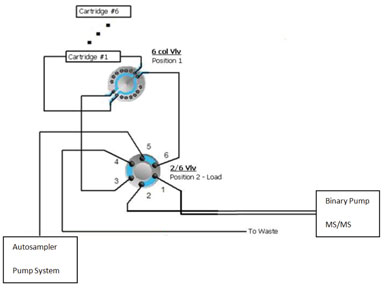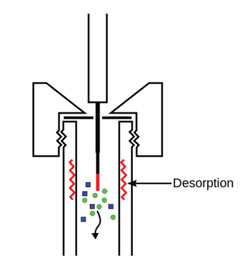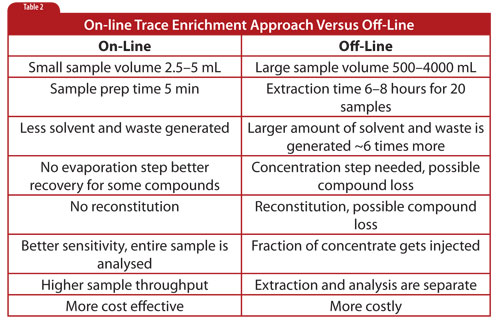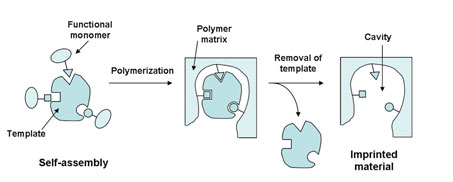In the last column, we discussed ‘just enough’ sample preparation techniques, such as filtration, protein precipitation, extraction partitioning, solid-supported liquid extraction and QuEChERS. Now we will discuss when ‘just enough’ is not enough sample preparation, and a more selective technique is required. GC and LC tandem MS have revolutionized our sample preparation strategies and our implementation of solid-phase extraction (SPE). The increased sensitivity and selectivity observed with tandem MS has offered scientists the option of doing less sample preparation, while still achieving good results; however, SPE is still a very important sample preparation technique to consider. SPE in its many forms is essential to selective sample preparation. SPE not only removes matrix components that can interfere with compound identification, such as MS ion formation (ion suppression) or matrix interferences but SPE also can selectively enrich (concentrate) the components of interests with a minimum quantity of organic solvent, and allow trace levels of detection.
SPE is typically based on a silica or polymeric material to which functionalized groups may be attached. The silica material can be irregular or spherical in shape, while polymeric is spherical. SPE material can be packed into many different formats: pipette tips, well plates, syringe barrel-type cartridges, packed formats for automation, and disks. SPE is also automatable, either off-line or on-line with the chromatographic system.

Figure 1: On-line SPE system with LC-QQQ.
SPE is perceived to require a lot of method development and to be time-consuming and costly. I believe these perceived disadvantages resulted from the early days of SPE when the packed materials might not have been as consistent, clean and robust as they are now. New sorbents make SPE processes simpler and easier to use. As for method development, there is a good chance that a method already exists for the extraction of your compound of interest. Internet search engines and application libraries available on manufacturer’s websites provide a world of SPE method information, step-by-step. Hence, there’s really no reason to re-invent the wheel when it comes to a SPE method.
To get started with SPE, it’s best if you know something about the chemical characteristics of the compounds that you are interested in to help you select the right SPE product for your needs. Even if you are working with a novel compound, these chemical characteristics allow you to make an informed SPE decision. Knowing the Log P and pK a of your compound is important. The Log P is the equilibrium distribution of the compound (solute) between two immiscible liquid phases. Normally one of the solvents is water while the second is hydrophobic, octanol. Log P or partition coefficient (octanol/water), is a measure of how hydrophilic (‘water-loving’) or hydrophobic (‘water-fearing’) a chemical substance is. Therefore, hydrophobic compounds will have a high octanol/water partition coefficient whereas hydrophilic compounds will have a low octanol/water partition coefficient. The Log P value can be used to determine the polarity of a compound (Table 1).

Table 1: Log P value can be used to determine the polarity of a compound.
The pK a is the logarithmic measure of the acid dissociation constant, K a which is the quantitative measure of the strength of an acid in solution. The pK a is the point at which the compound is 50% neutral and 50% ionized. With SPE, it is critical to work two pH units below or above the pK a in order to obtain a 100% ionized or 100% neutral compound. This is the ‘Rule of 2’, and applying this rule offers the optimum retention or elution from the SPE relative to the mode of interaction. There are several sites in which you can access Log P and pK a values for hundreds of thousands of compounds. Here are three:
1. http://chem.sis.nlm.nih.gov/chemidplus/
2. http://www.chemspider.com/
3. http://www.drugbank.ca/
If your compound is unique, there are also websites that help you to predict both the Log P and pK a values:
1. daylight.com/
2. acdlabs.com/products/percepta/predictors.php
When you know your compound(s) Log P and pK a , you can take a look at the various chemistry mechanisms of SPE to select the right phase. The chemistry mechanisms can be divided into hydrophobic (reversed phase), polar (normal phase), electrostatic (ion exchange), and mixed mode (secondary interactions). Once you have your SPE product selected, you can move into the actual process of doing SPE.
The four steps in SPE are known as:
Condition, Load, Wash and Elute
As previously documented each SPE manufacturer offers methods for their products, including a generic method for polymeric products. A generic method can be an excellent starting point for your SPE extraction procedure. Many of the parameters have been mapped out for you, such as sample pretreatment, conditioning, wash solvents and eluent, based on the manufacturer’s polymeric resin characteristics. As the method is generic, designed to accommodate a wide variety of compounds, optimization might be required for your particular extraction.
In addition to a simple generic method, polymeric SPE has many advantages over silica-based material. It is stable over a wide pH range (pH 0–14), which is useful for all method options. Polymeric resin is resistant to drying after conditioning, which offers greater error-free ease of use and throughput for the end users. The resin also has higher capacity/loadability — approximately 5 times higher than silica, which allows for a smaller bed mass to be employed and, therefore, reduced solvent consumption, and greater throughput.
As written earlier, SPE with its many formats is easily automated off-line and on-line. As with any approach, there are pros and cons. The setup for on-line SPE is quite simple and the on-line cartridges can be replaced without disturbing the plumbing to the valve. The software controls the on-line SPE cartridge position, wash and regeneration (Figure 1).

Figure 2: SPME fibre introduced into an injection port of a chromatographic system for desorption.
If we compare off-line SPE with on-line SPE for water analysis of emerging contaminants like PPCP (pharmaceuticals, personal care products), where the on-line SPE valve is attached directly to the MS/MS, we can see many advantages to using on-line SPE (Table 2).
Other SPE formats that have improved overall sample throughput are SPME (solid-phase micro-extraction) and MEPS (micro-extraction by packed sorbent). SPME is a fast solventless alternative to conventional sample extraction techniques, developed at the University of Waterloo, J. Pawliszn et al [1]. To understand the principle behind SPME, picture a very short gas chromatograph column that has been turned inside out. The fiber is coated with an extracting liquid phase (polymer) or solid (sorbent), which will extract specific analytes from the sample matrix, be it in a liquid or a gas phase. It is capable of concentrating volatile and non-volatile compounds. In SPME, analytes achieve equilibria between the sample matrix, the headspace above the sample and the coated fused fibre where the analytes are adsorbed. The analytes are then desorbed from the fiber into a chromatographic column via an injector inlet. As the analytes are concentrated on the fibre and rapidly delivered to the column minimum detection limits are improved (parts per trillion, ppt, have been reached) and resolution is maintained (Figure 2).

Table 2
SPME has great potential for field applications where direct analysis is not possible or available. Stored properly, samples can be analysed days later without significant loss of volatiles.
MEPS (patent pending) was first introduced by M. Abdel-Rehim [2], performs the same function as SPE only working on a much smaller scale. The SPE sorbent is packed into a MEPS bin or holder, which is the cartridge that is integrated into a microlitre syringe. The syringe can be any type of manual or autosampler syringe used in LC or GC techniques. MEPS accommodate the common chemistry mechanisms associated with classic SPE, such as reversed phase, normal phase, ion-exchange or mixed mode. Because the sample scale is on the order of 10 µL versus full scale SPE, which uses millilitres, MEPS significantly reduces the volume of solvents and sample needed.
Two additional SPE techniques are based on carefully designed mechanisms of interaction, namely molecularly imprinted polymer (MIP) and immunoaffintiy SPE (IA-SPE). MIPs are highly cross-linked polymer phases. The manufacturing involves polymerization of the monomers in the presence of a template compound that is extracted afterwards, leaving a complementary cavity behind. The cavity will have a very high affinity for the chosen template compound or group of structurally related analytes, which can then be selectively extracted from a sample matrix. One can find similarity to the lock-and-key mechanism often used to describe the interaction between a substrate and receptor = essentially making an artificial tiny lock for a specific compound that resembles a miniature key (Figure 3).

Figure 3: Schematic representation of molecularly imprinted polymer (MIP) formation.
Immunoaffinity SPE is based on a molecular recognition mechanism. The high affinity and selectivity associated with an antigen-antibody interaction allow for this specific extraction and concentration of analytes in one step. Extraction and clean-up of complex biological and environmental aqueous samples are achieved in the same step and from large volumes when required.
The information presented here offers an overview of the possible SPE formats and methodologies that are available to scientists when trace levels of analytes, concentration or very clean extracts are required for analysis.
References
[1] J. Pawliszyn, Solid Phase Microextraction Theory and Practice, Wiley-VCH, (1997).
[2] M. Abel-Rehim et al., J. Chromatogr. B., 801, 317–321 (2004).




